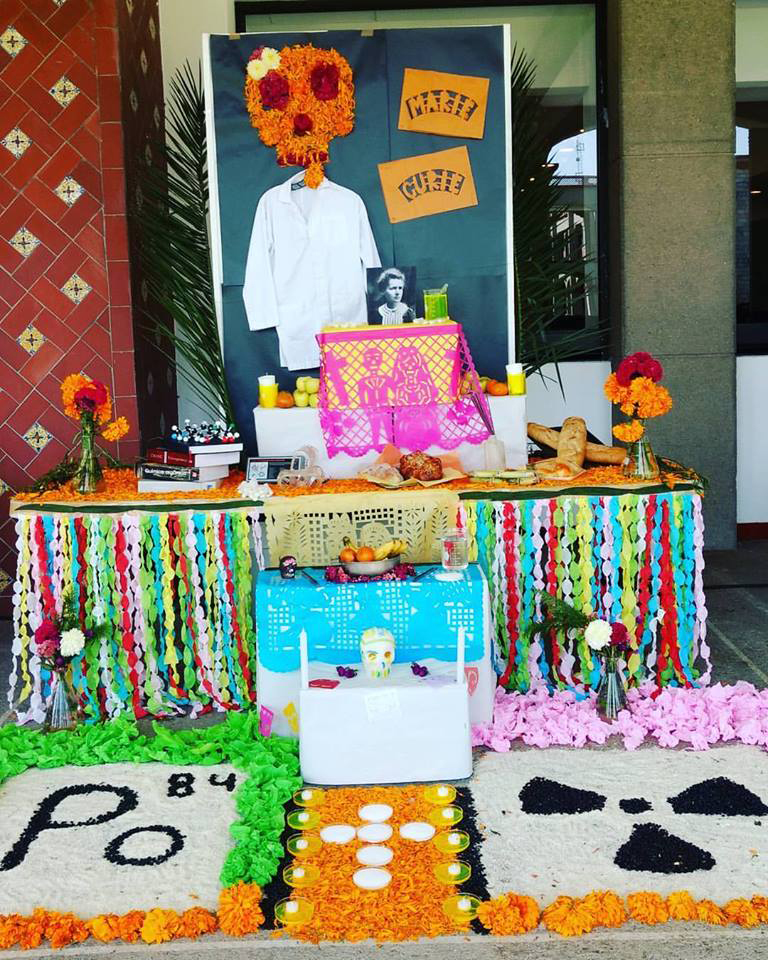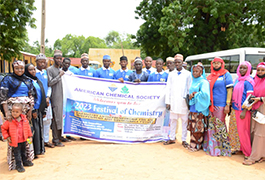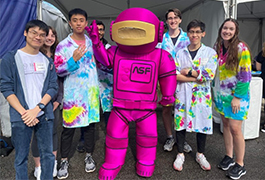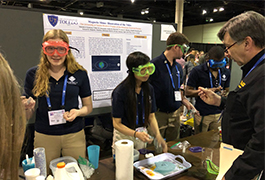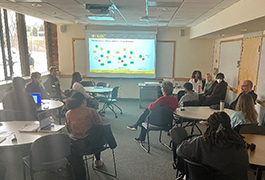Mexico Student Chapter Brings the Memory of Madame Curie to Life for Day of the Dead
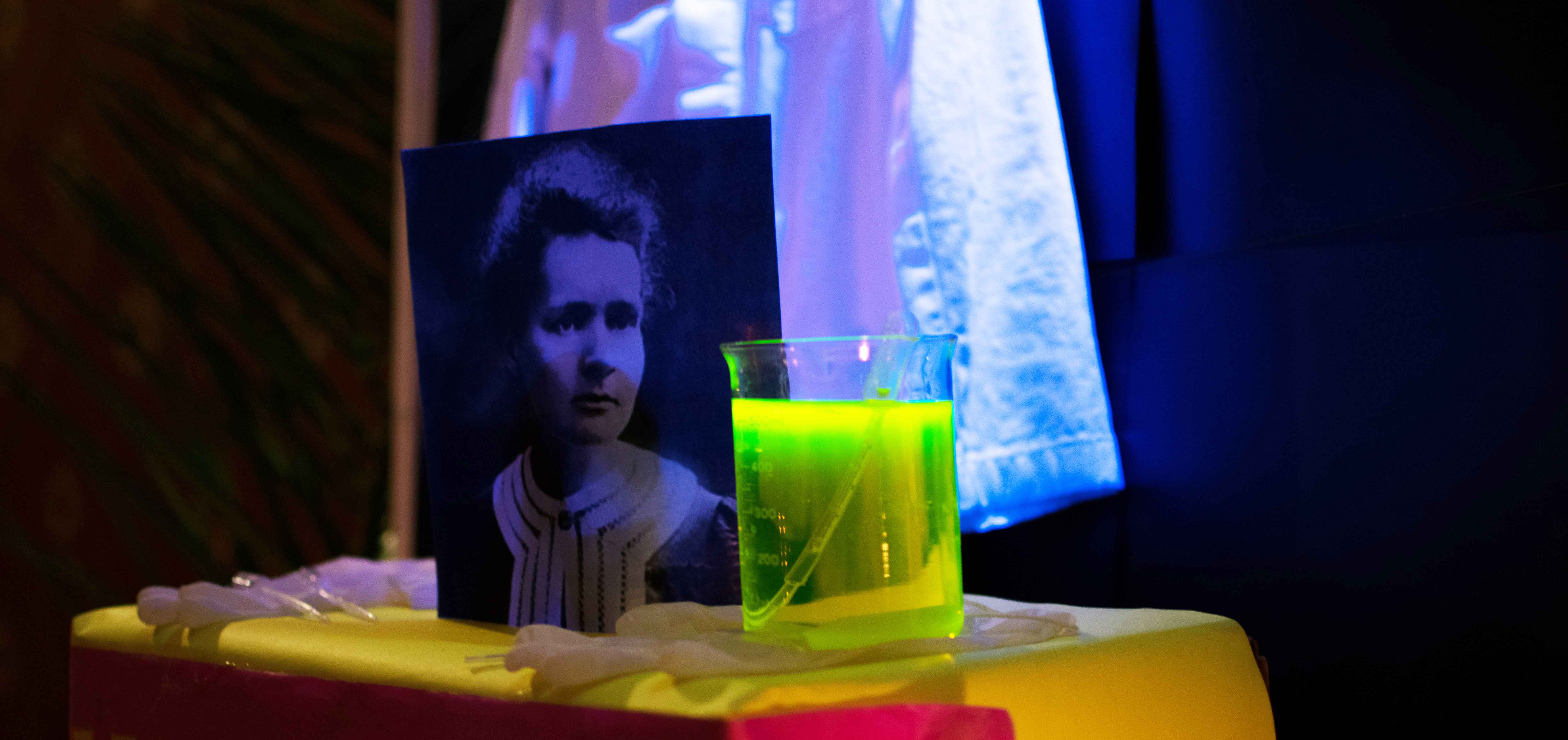
The pathway from life to death is an emblematic moment that causes fear, doubt, and admiration. Many cultures around the world have unique beliefs around this passage, and they have developed a variety of rituals and traditions to honor it respectfully.
Mexico is a country rich in culture and traditions. One of the biggest festivities that identifies us as a nation is the Day of the Dead. Every region in my country celebrates this holiday in its own way. There are also many similarities, creating a common link among all of us, where every family works together to prepare to receive the souls of loved ones who are no longer with us.
Day of the Dead originated several thousand years ago with indigenous cultures, such as Aztec, Toltec, and Nahuas. People in these cultures considered mourning the dead to be, in some way, disrespectful, as they firmly believed that death was just a natural phase in life’s long continuum. Today’s celebration is a mixture of the pre-Hispanic religious rites to keep alive the memories and spirit of the dead, and the Catholic traditions that take place on November 1 and 2 (All Saints’ Day and All Souls’ Day, respectively).
The most artistic and symbolic element of the celebration is the decoration of altars, or ofrendas, with items representative of the beloved deceased (other typical elements of an ofrenda include food, toys, candies, books, and photographs). Every year, our university organizes a contest of altar building and decoration — and in 2017, the members of Catalyst, the ACS international student chapter at Universidad de las Americas Puebla (UDLAP) in Puebla, Mexico, participated by making an altar to honor the contributions and life of Marie Curie, one of the greatest figures of science. We selected her because of the importance of her research in the development of chemistry as we know it today, and also because she is an inspiration who motivates women to pursue the study and practice of science.
For the altar that we built to honor Curie, we included as many scientific elements as possible and tried to merge them with typical Mexican traditional items. On the first tier of the altar, we created a representation of the chemical symbol of polonium and the international sign for radiation as a way to represent her life and death.
Between these two images, we placed a pathway made of marigold petals, whose strong aroma is believed to guide the souls back to their place of rest. We decorated this trail with candles on petri dishes with a fluorescent solution, resembling a radiative glow. Right under her picture, we placed a 600mL beaker containing a fluorescent solution, and for flower containers we used Erlenmeyer flasks. To further decorate the altar, we added some books, safety glasses, and molecular models, as well as a lab coat to represent Curie’s daily attire.
The altar was made and decorated using as much lab material as possible while still including traditional elements, such as fruit, religious elements, sugar and chocolate skulls, and more marigold flowers. We also included papel picado (colorful paper with beautiful cut-outs in various shapes and designs), and a special kind of bread made only during this time of the year called pan de muerto, or bread of the dead. The bread is decorated with representations of bones made from dough and arranged in a circle representing the circle of life, plus tiny teardrops symbolizing sorrow. Some water is also included to satisfy the visitors who are thirsty after their journey back to the living world. We also included incense, a traditional way to transmit praise and prayers and to purify the area around the altar. Using the papel picado, we wrote Curie’s name in the altar as a representation of life’s fragility.
Each of these basic components has a valuable meaning in the celebration of the Day of the Dead because it is believed that the person honored in the altar comes back to enjoy all that is placed on the altar, and because it allows both the living and the dead to coexist in one place. So, according to our traditions, if Marie Curie visited our altar, we hope she would find a nice surprise awaiting her!
Marie Curie’s life was not only doing science at the lab; in 1914, when World War I broke out in Europe, she found a way to use her expertise in science and radioactivity to help save the lives of wounded soldiers. X-ray imaging was very useful for doctors to locate bullets in the soldiers’ bodies and diagnose broken bones. Unfortunately, the equipment was impractical to take into battle. In order to make that technology more accessible to military doctors, Curie and her daughter Irene set up 200 radiological units created with modified automobiles. The Curies set up a training program at the Radium Institute where they taught other women how to operate the X-ray equipment. After the war, Curie dedicated the rest of her life to research.
Without a doubt, Marie Curie was a scientist who lived and died for science. Because of her work, she earned a Nobel Prize in Physics in 1903 and another in Chemistry in 1911 — two of the reasons why her legacy in science is still remembered. Because of the prolonged periods of exposure to radiation and radioactive materials during the operation of the X-ray units during the war, she developed aplastic anemia, which, sadly, caused her death in 1934.
Marie Curie’s life was closely interconnected with death. She faced it many times — first, when her husband Pierre died a few years before she received her second Nobel Prize in Chemistry in 1911, and later during World War I while attending thousands of wounded soldiers. Finally, her own death was a consequence of her passion and hard work as a scientist. Because of her intense connections with life and death, and considering her as an inspiration for both men and women, our chapter, Catalyst, decided to honor and remember her with this representative Mexican tradition of the Day of the Dead.

